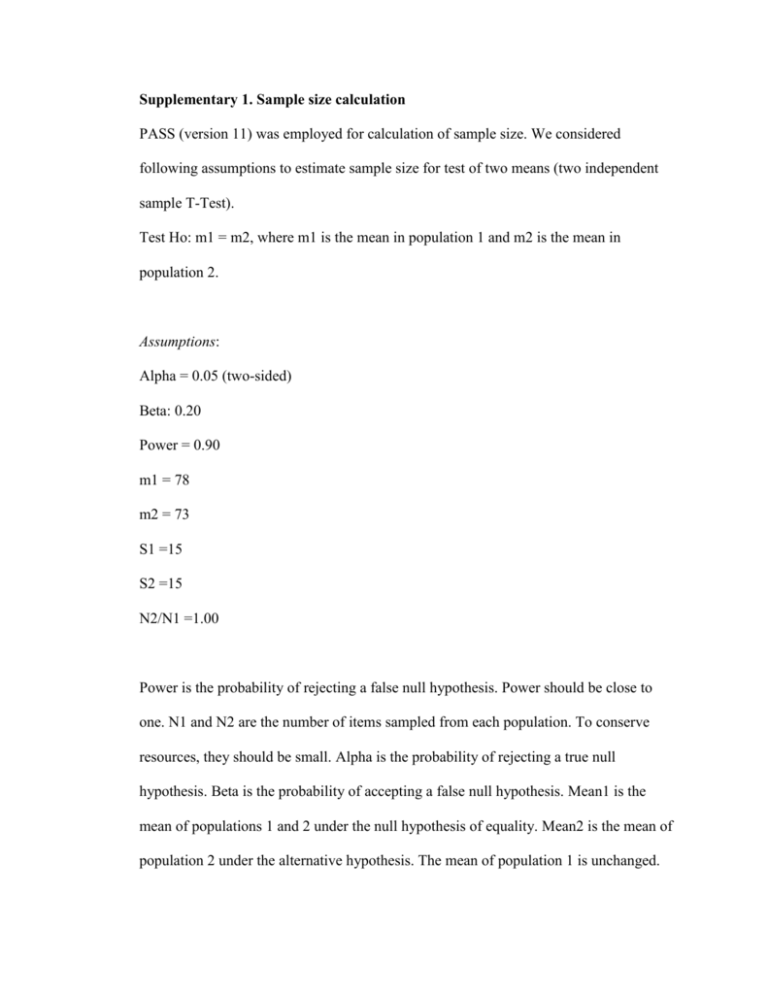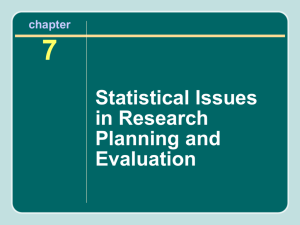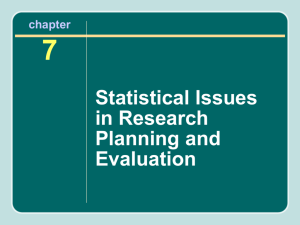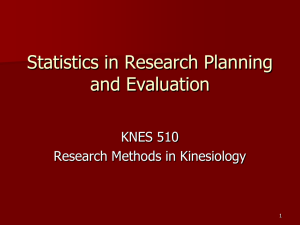Supplementary 1. Sample size calculation PASS (version 11) was
advertisement

Supplementary 1. Sample size calculation PASS (version 11) was employed for calculation of sample size. We considered following assumptions to estimate sample size for test of two means (two independent sample T-Test). Test Ho: m1 = m2, where m1 is the mean in population 1 and m2 is the mean in population 2. Assumptions: Alpha = 0.05 (two-sided) Beta: 0.20 Power = 0.90 m1 = 78 m2 = 73 S1 =15 S2 =15 N2/N1 =1.00 Power is the probability of rejecting a false null hypothesis. Power should be close to one. N1 and N2 are the number of items sampled from each population. To conserve resources, they should be small. Alpha is the probability of rejecting a true null hypothesis. Beta is the probability of accepting a false null hypothesis. Mean1 is the mean of populations 1 and 2 under the null hypothesis of equality. Mean2 is the mean of population 2 under the alternative hypothesis. The mean of population 1 is unchanged. S1 and S2 are the population standard deviations. They represent the variability in the populations. Estimated required sample sizes: N1 = 190 N2 = 190 Meanwhile, graph of sample size is as following: Summary Statements Group sample sizes of 191 and 191 achieve 90% power to detect a difference of 5.0 between the null hypothesis that both group means are 78.0 and the alternative hypothesis that the mean of group 2 is 73.0 with estimated group standard deviations of 15.0 and 15.0 and with a significance level (alpha) of 0.05 using a two-sided two-sample t-test.











